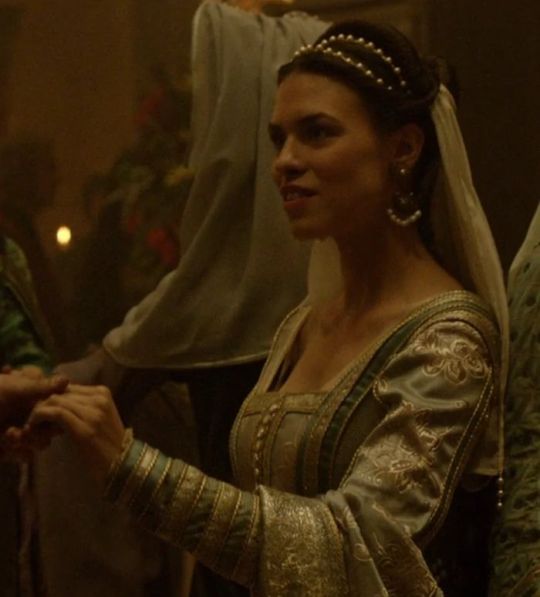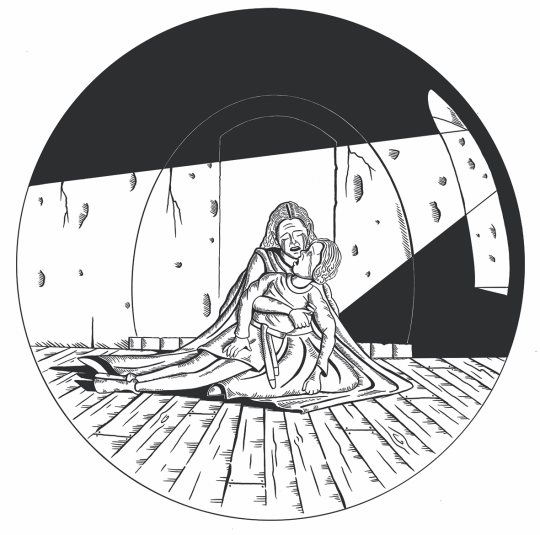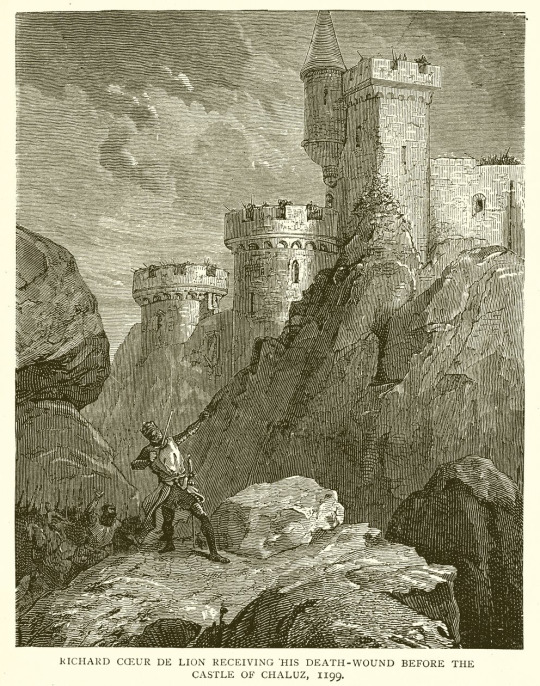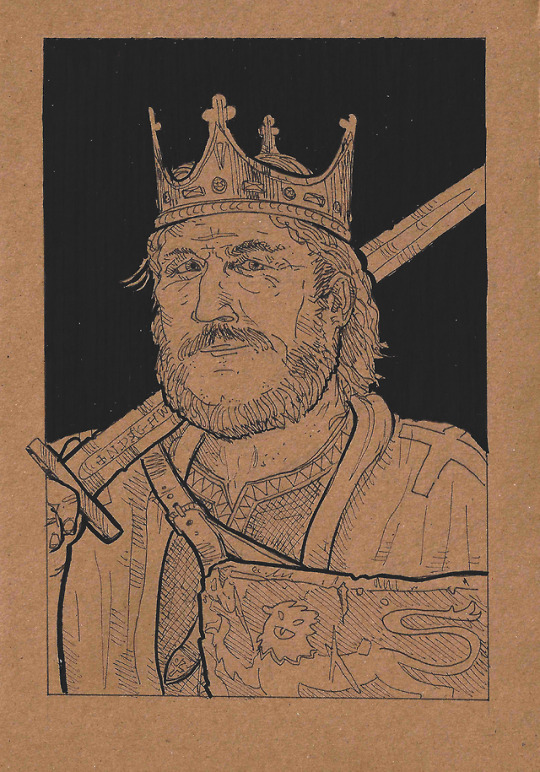#châlus
Explore tagged Tumblr posts
Text

The Siege of Chaluz (Richard I fatally wounded) by Harry Payne
#richard the lionheart#richard i#siege#chalus#châlus#art#harry payne#king#england#france#castle#castles#château#châteaux#richard cœur de lion#history#medieval#middle ages#knights#knight#europe#european#lionheart#richard lionheart#châlus chabrol#mercadier
230 notes
·
View notes
Text



01. sachâuli! (sach-oh-lee)
[pt: sachâuli, pronounced sach-oh-lee]
an umbrella centred around pink, flowers, lakes, baking, and paint. it is generally non-xenine but can be considered xenine, mixed with xenine terms, or presented in a generally xenic way. can be used for anything, not just genders!
other themes that might fall under sachâuli:
acts of kindness
cats
warm breezes
the smell of fresh laundry
lace
etc.
châuli - a sachâuli person. sachâulity - the equivalent of femininity/masculinity/etc. sachâuline - the equivalent of feminine/masculine/etc. sachâlune - gender alignment. chusâch - a sachâuli4sachâuli (châuli4châuli) term for sachâuli people attracted to other sachâuli people. transachâ - transitioning into sachâulity. sachâlun - a general sachâuli gender. lisâc - a sachâuline minor. châlu - a sachâuline adult.
no spoons for id, help appreciated but not forced <3 coined by felix & niki! for niki! queued on 9/1/25

taglist!!! @radiomogai @idwl @rwuffles @daybreakthing @boingogender
taglist 2!!! @neogenderumbrella-archive @cocajimmycola @flutteringwings-coining
not a xenogender, tagging for reach
#moqai#moqai coining#mogai#mogai coining#qai#qai coining#xeno#xeno coining#xenogender#xenogender coining#neogender umbrella#neogender umbrella coining#sachâuli#💿 coining#eyestrain tw#tw eyestrain
16 notes
·
View notes
Text

Did some doodles of Richard in his later years as described by the accounts Jean Flori references in his book, which all in all seems to add up to him being "solidly built", similar to Henry in his energetic temperament and manner, weirdly tall, weirdly pale, and who put on more weight in the latter half of his life.
Most of the later period was spent feuding with Philip over territories, wherein he built Chateau Gaillard and met his end with an infected wound from an arrow shot at Châlus.
#Richard the lionheart#Philip Augustus#Richard Lionheart#12th century#Jean flori#Medieval#Historical art#Richiliippe#Sort of. Their old man yaoi era
7 notes
·
View notes
Text
HISTORIA "REY RICARDO "CORAZÓN DE LEÓN" DE INGLATERRA"
Ricardo Corazón de León (Richard Lionheart su nombre original), Ricardo I de Inglaterra, fue un rey muy notable dentro de la dinastia Platagenet, nació en 1157 en Oxford, Inglaterra y falleció en 1199 en Châlus, Aquitania, Francia. En su biografía sería destacado por su habilidad militar y su intervención en la Cruzadas, especialmente en la tercera, en el que se ganaría la fama, por tanto…

View On WordPress
0 notes
Text

Charlotte of Albret (1480 – 11 March 1514), Dame de Châlus, was a wealthy French noblewoman of the Albret family. She was the sister of King John III of Navarre and the wife of the widely notorious Cesare Borgia, whom she married in 1499. She was the mother of his only legitimate child, Louise Borgia, to whom she acted as regent of the Duchy of Valentinois following the death of Cesare from 1507 to 1514.
1 note
·
View note
Note
It was common in the Middle Ages for the hearts and intestines of kings to be interred separately. This allowed them to be memorized and prayed for in multiple places, serving to attempt to solidify their legacies as well as to better help them along in the afterlife.
Richard I’s body is interred near Saumur, his intestines in Châlus, and his heart in Rouen.
Tbh I'm more surprised that King John and Richard ARE real
I thought all of it was stories
You can visit Richard’s tomb in France and John’s tomb in Worcestershire.
Also Richard’s heart was buried separately from him. Not sure why. They’ve done forensic analysis of it.
#I am aware I am simplifying greatly#particularly in regard to the religious aspect#it’s an interesting practice though#and worth noting that the Church didn’t really like it#but individual churches did because it brought them money from the people who wanted to be interred#and sometimes even made them a place people would travel to to see the tombs
89 notes
·
View notes
Text
Charlotte d'Albret
Image: the-borgias.fandom.com

Charlotte d'Albret, Duchess of Valentinois and suo jure dame de Châlus (1480 – March 11, 1514), commonly known as Charlotte d'Albret, was a wealthy French noblewoman of the Albret line, sister of King John III of Navarre, and wife of the famed Cesare Borgia, whom she married in 1499. She was Cesare's sole legitimate daughter, Luisa Borgia, for whom she served as regent following his death.
Charlotte, the daughter of Alan the Great, Lord of Albret, and Francesca de Châtillon-Limoges, was born in 1480. Her paternal grandparents were Count Bertrand V of La Tour d'Auvergne and Boulogne and Isabelle de La Tour d'Auvergne, daughter of Count Bertrand V of La Tour d'Auvergne and Boulogne, and Jacquette du Peschin, and her maternal grandparents were William of Blois, Viscount of Limoges, and Isabelle de La Tour d'Auvergne, daughter of Count Bertrand V of Charles I of Albret, Constable of France, was her paternal great-great-grandfather, and he was killed in command of French troops during the Battle of Agincourt in 1415. He had six siblings, including John of Albret, who married Catherine de Foix and became King of Navarre.
Cesare Borgia's marriage
She married Cesare Borgia, the illegitimate son of Pope Alexander VI and Vannozza Cattanei, in Blois on May 10, 1499, when she was 19 years old. King Louis XII of France recently named him Duke of Valentinois. Cesare's alliance with France was strengthened by the marriage, which was arranged for political reasons. Caesar accompanied King Louis on his invasion of Italy shortly after the wedding.
"Beautiful and wealthy," Carlotta was described. She acquired the estates of Feusines, Néret, and La Motte-Feuilly in 1504.
Cesare and Carlota only had one kid together (despite the fact that Cesare had at least eleven illegitimate children from other mistresses):
Louise Borgia, suo jure lady of Châlus and duchess of Valentinois (May 17, 1500 - 1553), married Louis II de la Trémoille, governor of Burgundy, on April 7, 1517; she married a second time on February 3, 1530, to Philip of Bourbon, lord of Busset, with whom she had children.
César perished at the siege of Viana on March 12, 1507, in the service of Carlota's brother, the king of Navarre, with whom he had sought asylum after escaping from jail in Spain.
4 notes
·
View notes
Text
Day 58 - William and Maude de Braose - how the innocent suffer
William de Braose was a favourite at the court of King John. A favourite that is, until he fell out of favour with the king. Then things turned bad for his family.
The story of the imprisonment of Maud and her son, William until they starved to death is a poignant moment in Hell Unearthed. For all the sin and crime which is driven by selfish motives, let’s pause a moment to think of the innocent people who suffer along the way.

Book purchase link

Masterlist
Follow me
William married Maud in 1166 when she was just 11 and they lived under the rules of the English kings Henry, Richard and John.
William earned the wrath of the Welsh when he committed the Abergavenny murders in 1175, tricking various Welsh princes and leaders to come to a conciliatory dinner and having them murdered by his men.
In 1199, William fought alongside Richard I at Châlus in France when the king was mortally wounded. He supported King John’s claim to the throne and became a court favourite. John gifted him with land and castles, and it is thought that he may have tasked William with the murder of his nephew, Arthur of Brittany.
However, he soon fell out of favour with the king who claimed he owed money from his estates to the Crown and he seized William’s estates across England and Wales.
Maud made no secret of the fact that she believed John had given instructions to murder Arthur and the pair of them were hunted down. William fled to Ireland and then to France disguised as a beggar to evade King John’s capture.
Maud, however, was not so lucky. She was imprisoned with their eldest son, William, in the dungeons at Corfe Castle in Dorset where they starved to death.
The speed of the de Braoses’s fall alarmed the barons, who considered it a sign of the king’s volatile temperament. Clause 39 of the Magna Carta, considered to be a precedent for trial by jury, was included in part due to the desire for protection against arbitrary decision-making like the punishments surrounding the de Braose family.
1 note
·
View note
Photo




EDIT: LOUISE BORGIA, DAME DE CHÂLUS & DAME VALENTINOIS, AGE 14. ( mutuals may reblog )
How does one defeat their darkest damage? You take a lesson from Persephone, learning how to adapt to hell and glow as brightly as the sun, even when you are surrounded by the dark.
#( my edits. )#i'm not at all crying about louise and what life put her through. nope.#she's known sadness and it has made her kind (louise)
3 notes
·
View notes
Text

#richard the lionheart#richard i#king#england#art#richard lionheart#richard cœur de lion#richard coeur de lion#medieval#middle ages#siege#death#castle#castles#france#châlus#chalus#chaluz#history#knights#knight#europe#european#mediaeval#britain
140 notes
·
View notes
Photo

On This Day In Royal History . 6 April 1199 . King Richard I died . . ◼ In March 1199, Richard was in the Limousin suppressing a revolt by Viscount Aimar V of Limoges. In the early evening of 25 March 1199, Richard was walking around the castle perimeter without his chainmail, investigating the progress of sappers on the castle walls. One defender in particular amused the king greatly, a man standing on the walls, crossbow in one hand, the other clutching a frying pan he had been using all day as a shield to beat off missiles. He deliberately aimed at the king, which the king applauded; however, another crossbowman then struck the king in the left shoulder near the neck. . ◼ He tried to pull this out in the privacy of his tent but failed; a surgeon, removed it, “carelessly mangling” the King’s arm in the process. The wound swiftly became gangrenous. . ◼ Accordingly, Richard asked to have the crossbowman brought before him, the man turned out (according to some sources, but not all) to be a boy. The boy claimed that Richard had killed his father & two brothers, & that he had aimed at Richard in revenge. . ◼ The boy expected to be executed; Richard, as a last act of mercy, forgave him, saying, “Live on, & by my bounty behold the light of day,” before ordering that the boy be freed & sent away with 100 shillings.Richard then set his affairs in order, bequeathing all his territory to his brother John & his jewels to his nephew Otto. . 👑 Richard died on 6 April 1199 in the arms of his mother (Eleanor of Aquitaine); it was later said that “As the day was closing, he ended his earthly day.” Because of the nature of Richard’s death, he was later referred to as “the Lion (that) by the Ant was slain”. . ◼ Richard’s heart was buried at Rouen in Normandy, his entrails in Châlus (where he died), & the rest of his body at the feet of his father at Fontevraud Abbey in Anjou. . ◼ Richard produced no legitimate heirs & acknowledged only one illegitimate son, Philip of Cognac. As a result, he was succeeded by his brother John as King of England. . . . (at France) https://www.instagram.com/p/B-pDEq2D9F2/?igshid=p6yeoblr5ghl
3 notes
·
View notes
Note
Love the designs in the new comic! How would Richard's later years look like in the AU?
I actually haven't thought about how the boys would look like or what their lives would be outside of my Humorously Recreating Historical events--especially since the timeline is very compressed so everyone is basically speedrunning 30-40 years of Events in like 1-2 teenage summers lol. I wrote a lot of thoughts below (also going into overthinking of How Burger King Universe even works), TLDR the binary is he'd either be a Dead Teen who rocked out a little too hard and made the wrong random person mad or he'll grow up and become a completely normal guy with no relation or connection at all to the historical Richard the lionheart aside from that tumultuous period, but to do so one has to exit the story I make in my head hahaah
Burger King Edgyverse : In this verse it would prob sort of be one of those really edgy teen narratives that follow the Richard timeline of he goes to the crusade concert, has massive interpersonal drama stemming from the 10000 personal and familial issues that escalates and catastrophizes all the relationships, goes home, tries to fix things, continues to have massive drama, maybe comes close to fixing it but then ends up dying really randomly out of some weird karma situation IDK maybe it's like the legend where some kid who he forgot about HATES him and then idk hit him with their car or smth on Châlus street while he's busy beefing. And then everyone is finally like damn.....he was a hot mess but he did some cool stuff so now we are all going to watch his videos and think Abt his life from another angle recontextualized and we now think he was cool now (PR internet movement gets built up. ). idk I'm a bitch who loves weirdly anticlimactic tragedy so that's one universe.
Kind of is my processing and sticking to the main points of the historical Richard life which always struck me as very Dramatic and almost cyclical, which Is very fun for me. Idk there is something very "cursed" about all the family members and their ends and relationships so following up with that (in a more modern sensibility way) is fun to me.
ALTERNATIVELY:
I also thought about...what if characters in the Bk universe aren't cursed to that eternal return...idk. I had a funny thought earlier like that Geoffrey in BK universe doesn't die, he just becomes self-aware of and chooses to exit bc he's tired of the bullshit hahaa (tv equivalent of actor having to leave the show). In my mind, for the Narrative, some people do have to die, namely in my mind Junior does die in BK universe and shifts the mood from haha sillie goofy conflict to more strained and bitter. After all it IS an AU. Maybe BK Richard can leave being "Richard" timeline behind and be just a guy in an unrelated story who grows up past the predetermined historical event timeline parallels and can be a normal person with average life sort of thing. But that's beyond my scope since I'm mostly interested and focused on reinterpreting specific dynamics in that timeline, and deviating too much is when characters feel less AU and more distant and become different People to me (which would be the point...the historical figure must die for a person to live? Idk.
I know this feels like a weird distinction to make, and prob plenty of ppl probably see my delusions and think it's ALREADY so deviant but its more internal like in my mind I like having specific connections to historical stuff even if it's a weird tangled thread heheh. In general though, all is in good fun.....it's late so I may write later so apologies if this makes no sense at all but thanks for reading this far if u got it hahaah
3 notes
·
View notes
Photo

Richard I the Lionheart, King of England. Remembered favorably compared to his brother King John due to his popularity with the church. he didn’t know how to speak English and Neglected his kingdom, taxed & sold England to fund his life abroad crusading. He died of gangrene after being shot in the shoulder by a peasant crossbowman while besieging Châlus-Chabrol.
1 note
·
View note
Photo

La ferme de L’Alchimiste EN DIRECT de Chalus pour le marché des pépiniéristes et des saveurs locales. Vous y trouverez de quoi vous restaurer, des nouvelles saveurs à découvrir et de nombreuses pépinières. @tourisme87 @hautevienne_dep @passionlimousin #naturel #fermedelalchimiste #lalchimiste #infusion #limousin #hautevienne (à Châlus) https://www.instagram.com/p/ClJQcZtqTd2/?igshid=NGJjMDIxMWI=
0 notes
Video
Courtesy @bebobianchi #DestinosIn Chateau Plantagenet #chalus #limousin #france🇫🇷 #travelling #traveltheworld #travelingram #dametraveler #travelgoals #traveldiaries #travelpic #travelinspiration (at Châlus) https://www.instagram.com/p/CTx68L0IMfZ/?utm_medium=tumblr
#destinosin#chalus#limousin#france🇫🇷#travelling#traveltheworld#travelingram#dametraveler#travelgoals#traveldiaries#travelpic#travelinspiration
0 notes
Text

ABR - 06 - (AÑO 1199) - UN DÍA COMO HOY - EN EL SITIO DE CHALUS, EN EL CENTRO DE FRANCIA, EL REY RICARDO CORAZÓN DE LEÓN, MUERE DE UNA INFECCIÓN PROVOCADA POR UN FLECHAZO EN EL HOMBRO.
Ricardo I de Inglaterra, nació en el Palacio de Beaumont, Oxford, el 8 de septiembre de 1157 y falleció en Châlus, Limousin, Francia, el 6 de abril de 1199, conocido como Ricardo Corazón de León, fue rey de Inglaterra entre 1189 y 1199, siendo el tercer hijo del rey Enrique II de Inglaterra y de Leonor de Aquitania.
Durante su reinado, solo visitó Inglaterra en dos ocasiones: las correspondientes a sus dos coronaciones. En total, no llegaron a seis los meses que pisó su suelo como rey. Tomó parte en la Tercera Cruzada, con campañas en Sicilia y Chipre en el camino y, posteriormente, pasó un período arrestado por Leopoldo V, duque de Austria.
Fue un hombre con una buena educación, que compuso poesía en francés y en occitano. Se decía que era muy atractivo, con un cabello entre pelirrojo y rubio, ojos claros y tez pálida. Al parecer, tenía una estatura superior a la media: 1,96 m. Sin embargo, no se conoce su estatura exacta porque sus restos, ya en tiempos de la Revolución francesa, se habían perdido.
Desde temprana edad pareció tener habilidades políticas y militares destacadas y se volvió notorio por su valentía y disposición al combate, librando duras campañas para controlar las rebeliones de los nobles en su propio territorio. Como sus hermanos, Ricardo desafiaba constantemente la autoridad de su padre y su sentido de responsabilidad se volvía cuestionable. [email protected]
0 notes